In police work there is the chain of possession. When evidence is collected, who has it, and where it’s kept is recorded constantly. With food we might call it the Chain of Contamination.
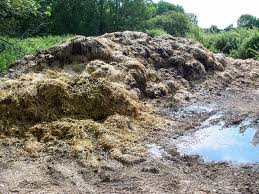 First it might be a genetically modified plant, one that has not been proven safe by being eaten over centuries. Then there is the soil and water. They could be polluted by a variety of means. The ground might also have real old fashion manure on it, dog to human — think ebola — or it might be artificial manure called fertilizer. As for water, is there any fresh, wholesome water any more? If you are not on your own well, someone is putting something into your water somewhere.
First it might be a genetically modified plant, one that has not been proven safe by being eaten over centuries. Then there is the soil and water. They could be polluted by a variety of means. The ground might also have real old fashion manure on it, dog to human — think ebola — or it might be artificial manure called fertilizer. As for water, is there any fresh, wholesome water any more? If you are not on your own well, someone is putting something into your water somewhere.
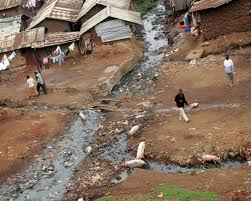 The plant could be raised in a second or third world country where sanitation is still centuries behind, or by a first-world businesses trying to cut corners. Then there are the pesticides, herbicides and growth hormones. Let’s not forget as well all the people who handle the plant from the ground to the store shelf. There’s a lot of opportunity there for the plant to not be wholesome by the time it gets to you.
The plant could be raised in a second or third world country where sanitation is still centuries behind, or by a first-world businesses trying to cut corners. Then there are the pesticides, herbicides and growth hormones. Let’s not forget as well all the people who handle the plant from the ground to the store shelf. There’s a lot of opportunity there for the plant to not be wholesome by the time it gets to you.
What of the wild plant? I walk in the woods or field and harvest it, my hands being the only ones that touch it. Neither the soil nor have been treated with anything. The only water is rainwater. And the plant is genetically original and nutritionally superior to the store-bought equivalents. That is perhaps the best case scenario but not at all impossible.
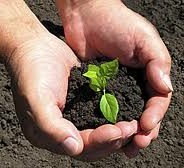 I used to know an old Italian organic gardener in Deltona, Florida, named Rudy Picconi. He was doing organic gardening decades before it was fashionable. I asked him back in the early 80’s about insects bothering his plants. He said he used a wide variety of natural ways to keep them at bay. But, he said, “you have to let the insects win some of the time.” There is more wisdom in that than one first assumes.
I used to know an old Italian organic gardener in Deltona, Florida, named Rudy Picconi. He was doing organic gardening decades before it was fashionable. I asked him back in the early 80’s about insects bothering his plants. He said he used a wide variety of natural ways to keep them at bay. But, he said, “you have to let the insects win some of the time.” There is more wisdom in that than one first assumes.
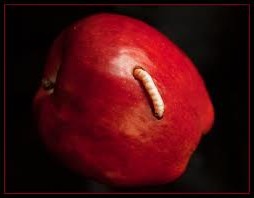 Think of the person who will not eat the wild apple because it has a worm hole. The worm hole tells you the apple is wholesome, as do a few holes in spinach leaves, or a blemish here and there on a beet. Do you really think chemicalized food that kills other creatures is more wholesome than natural food? If the insect can live off it so can you. If it kills the insect you might want to reconsider. Not only that but when our ancestors found a worm in an apple it was extra protein, not something to be tossed away.
Think of the person who will not eat the wild apple because it has a worm hole. The worm hole tells you the apple is wholesome, as do a few holes in spinach leaves, or a blemish here and there on a beet. Do you really think chemicalized food that kills other creatures is more wholesome than natural food? If the insect can live off it so can you. If it kills the insect you might want to reconsider. Not only that but when our ancestors found a worm in an apple it was extra protein, not something to be tossed away.
I am not saying insects and humans are alike or affected by the same things. Clearly we are different creatures but we share being alive and that makes us vulnerable. Given the bad record of food chemicals it seems prudent to lessen the chemist in the kitchen and the environment.
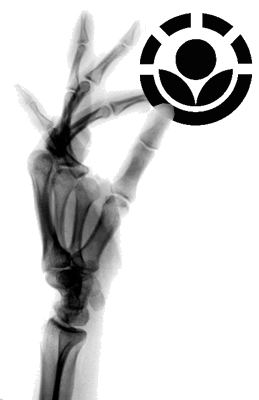 As for irradiated food… it might just be another form of sterilization, but I prefer food that has retained its natural ability to rot. If it can’t support something as simple as a bacteria I’m not sure it is good for me. Like genetically modified crops, irradiated food has not been around for centuries to prove it is wholesome. Perhaps in a century or two there will be enough of such food consumed for a good decision to be made. But right now the safety and any possible effects, good or bad, is an educated guess.
As for irradiated food… it might just be another form of sterilization, but I prefer food that has retained its natural ability to rot. If it can’t support something as simple as a bacteria I’m not sure it is good for me. Like genetically modified crops, irradiated food has not been around for centuries to prove it is wholesome. Perhaps in a century or two there will be enough of such food consumed for a good decision to be made. But right now the safety and any possible effects, good or bad, is an educated guess.
Setting aside bad food advice from dogmatic doctors — read Good Calorie Bad Calorie by Gary Taubs, his new book is Why We Get Fat — one of the main problems we have is a lot of our food really isn’t food. It is preprocessed stuff and additives. And the other problem is much of the real food is also cursed by the chemist. The only sustenance untouched is wIld food, and it looks better every day.
I’m not against progress or science but I have lived enough to know that empiricism and science are great but limited tools. Their ability to be descriptive of reality is often woefully exaggerated. That’s when the guessing begins. And that’s when our health suffers.


To make things worse, if you live in an urban area (for example, downtown Orlando), some of the best wild edibles available are contaminated with pesticides, dog manure, human urine, and chemicals from cars. So to find their equivalent, you may have to forage in a park or drive to a suburban/rural area, or buy an overpriced wild edible at Whole Foods or a farmer’s market.